Taraxacum mongolicum
Taraxacum mongolicum
1. The products in our compound library are selected from thousands of unique natural products; 2. It has the characteristics of diverse structure, diverse sources and wide coverage of activities; 3. Provide information on the activity of products from major journals, patents and research reports around the world, providing theoretical direction and research basis for further research and screening; 4. Free combination according to the type, source, target and disease of natural product; 5. The compound powder is placed in a covered tube and then discharged into a 10 x 10 cryostat; 6. Transport in ice pack or dry ice pack. Please store it at -20 °C as soon as possible after receiving the product, and use it as soon as possible after opening.
Natural products/compounds from Taraxacum mongolicum
- Cat.No. Product Name CAS Number COA
-
BCN5869
Taraxasterol1059-14-9
Instructions
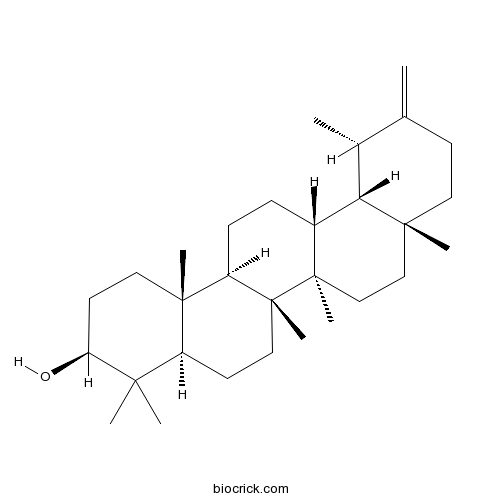
-
BCN6148
Taraxerol127-22-0
Instructions
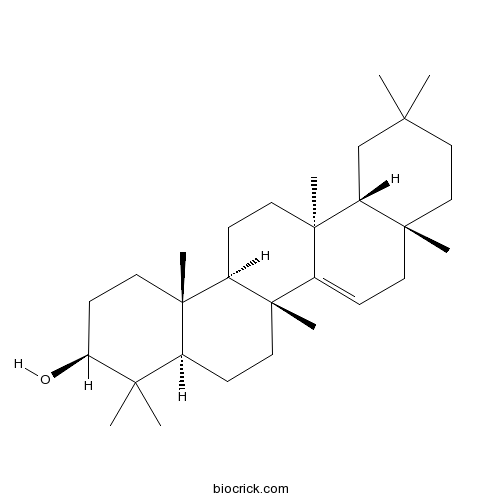
-
BCN5906
Chlorogenic acid327-97-9
Instructions
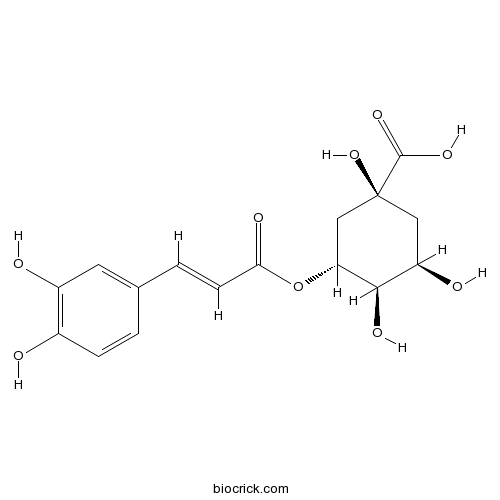
-
BCN5979
Caffeic acid331-39-5
Instructions
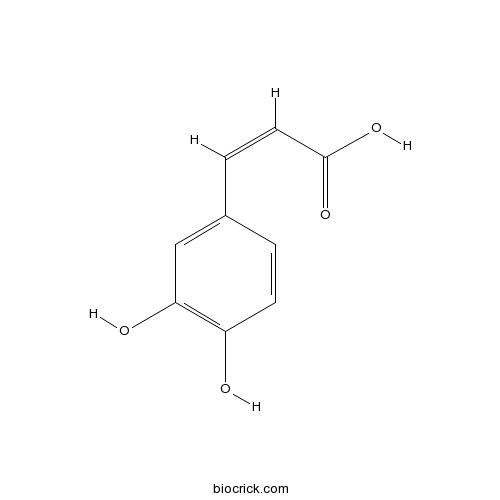
-
BCN5600
Luteolin491-70-3
Instructions
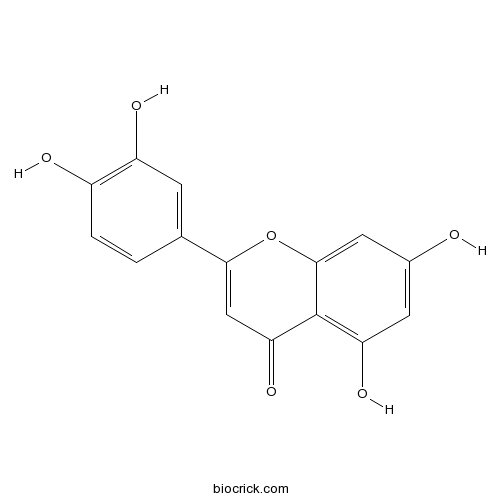
-
BCN2356
Diosmetin520-34-3
Instructions

-
BCN5725
Lupeol545-47-1
Instructions

The anti-inflammatory NHE-06 restores antitumor immunity by targeting NF-κB/IL-6/STAT3 signaling in hepatocellular carcinoma.[Pubmed: 29574282]
The NF-κB/IL-6/STAT3 inflammatory axis is highly activated in a variety of inflammation-related cancers and contributes to suppression of antitumor immunity. In this study, we generated a novel herbal formula NHE-06, a water-decocting extract from six natural herbals, Ficus carica, Taraxacum mongolicum, Angelica sinensis, Lonicera japonica, Pseudo-ginseng and Folium ginkgo. We investigated the anti-inflammatory properties of NHE-06 and its antitumor efficacy in hepatocellular carcinoma, a typical inflammation-related cancer. We found that NHE-06 effectively suppressed NF-κB/IL-6/STAT3 signaling and enhanced antitumor immunity both in vitro and in HCC-bearing mice. In a subcutaneous HCC mouse model, we found that NHE-06 possessed both preventive and therapeutic functions. Moreover, rather than the cytotoxic effects, the antitumor efficacy of NHE-06 was indispensable of intact immunity, since the therapeutic effect was only achieved in immunocompetent mice whereas failed in immunocompromised mice. Taken together, the novel formula of the anti-inflammatory NHE-06 effectively restores antitumor immunosurveillance and can be applied for prevention and/or treatment of inflammation-related cancers.
Taraxacum mongolicum extract induced endoplasmic reticulum stress associated-apoptosis in triple-negative breast cancer cells.[Pubmed: 28461119]
Triple-negative breast cancer (TNBC) is an aggressive and deadly breast cancer subtype with limited treatment options. It is necessary to seek complementary strategies for TNBC management. Taraxacum mongolicum, commonly named as dandelion, is a herb medicine with anti-cancer activity and has been utilized to treat mammary abscess, hyperplasia of mammary glands from ancient time in China, but the scientific evidence and action mechanisms still need to be studied.
Plant-derived phosphocholine facilitates cellular uptake of anti-pulmonary fibrotic HJT-sRNA-m7.[Pubmed: 28378154]
Pulmonary fibrosis, a progressive chronic disease with a high mortality rate, has limited treatment options. Currently, lung transplantation remains the only effective treatment. Here we report that a small RNA, HJT-sRNA-m7, from a Chinese herbal medicine Hong Jing Tian (HJT, Rhodiola crenulata can effectively reduce the expressions of fibrotic hallmark genes and proteins both in alveolar in vitro and in mouse lung tissues in vivo. We also discovered over one hundred oil-soluble chemicals from HJT decoctions, most of which are found in lipid extracts from other Chinese herbals decoctions, including Pu Gong Ying (PGY, Taraxacum mongolicum), Chuan Xin Lian (CXL, Andrographis paniculata), and Jin Yin Hua (JYH, lonicera japonica or Honeysuckle). We identified the active component in these decoctions as two forms of phosphocholines, PC (18:0/18:2) and PC (16:0/18:2). These PCs potentially could form liposomes with small RNAs to enter human alveolar and gastric cells. Our experimental results suggest an unprecendent lipid complex route through which botanic small RNA can enter human bodies. Our results provide an innovative treatment strategy for oral delivery of siRNAs as therapeutic medication.
Chemical constituents of the aerial part of Taraxacum mongolicum and their chemotaxonomic significance.[Pubmed: 28278637]
A phytochemical investigation of Taraxacum mongolicum led to the isolation of 24 compounds, including six flavonoids (1-6), four sesquiterpenes (7-10), two sphingolipids (11 and 12), six glycerols (13-18) and six triterpenoids and sterols (19-24). The structures of these compounds were identified by spectroscopic methods, and their data compared with those reported in the literature. This is the first report of compounds 11-19 from T. mongolicum and the genus Taraxacum, and compounds 11, 12, 15, 16, 18 and 19 from the Asteraceae family. The chemotaxonomic relationship between T. mongolicum and other Taraxacum species is also discussed.
Different responses of alpine plants to nitrogen addition: effects on plant-plant interactions.[Pubmed: 27922131]
The different responses of plant species to resource stress are keys to understand the dynamics of plant community in a changing environment. To test the hypothesis that nitrogen (N) increase would benefit N competitive species, rather than N stress-tolerant species, to compete with neighbours, we conducted an experiment with neighbour removal, N addition and soil moisture as treatments in an alpine grassland on the southeastern Tibetan Plateau. Both growths and competitive-response abilities (CRA, the ability to tolerate the inhibitory effects of neighbors) of Kobresia macrantha, Polygonum viviparum and Potentilla anserine in wet site were facilitated by N addition, conversely, both growths and CRA of Taraxacum mongolicum and Ligularia virgaurea were suppressed by N addition, indicating that the responses of CRA of target species under N addition were consistent with the N utilization strategies of them. Moreover, the facilitative effects of N addition on competitive-response abilities of Kobresia macrantha and Polygonum viviparum were not found at the dry site, illustrating that soil moisture can alter the changes of neighbour effects caused by N addition. Life strategy of dominant species in plant community on the undisturbed southeastern Tibetan Plateau may shift from N stress-tolerant to N competitive, if the N increases continuously.
Protective effects of organic acid component from Taraxacum mongolicum Hand.-Mazz. against LPS-induced inflammation: Regulating the TLR4/IKK/NF-κB signal pathway.[Pubmed: 27566210]
TMHM is a type of Chinese medicine commonly used in medical practice and has multiple functions, including clearing heat, detoxification, reducing swelling, and tumor therapy. Previous research has demonstrated that the OAC of TMHM (TMHM-OAC) displays advantageous therapeutic action against respiratory inflammation. However, the effect of TMHM-OAC on inflammatory injury and its anti-inflammatory role requires further clarification.
Structure analysis of a heteropolysaccharide from Taraxacum mongolicum Hand.-Mazz. and anticomplementary activity of its sulfated derivatives.[Pubmed: 27516270]
A homogenous water-soluble polysaccharide, DPSW-A, with a deduced chemical structure was extracted from the herb Taraxacum mongolicum Hand.-Mazz. Moreover, 80.813-kDa DPSW-A is composed of three types of monosaccharide, namely rhamnose, arabinose, and galactose, at a molar ratio of 1.0:10.7:11.9. The main chain of DPSW-A contains Terminal-Galp, 1,3-Galp, 1,6-Galp, 1,3,6-Galp, and 1,2,4-Rhap; the branched chain contains Terminal-Araf, 1,5-Araf, and 1,3,5-Araf. The sulfated derivatives prepared from DPSW-A showed inhibitory effects on complement activation through the classical pathway (CH50: Sul-DPSW-A, 3.94±0.43μg/mL; heparin, 104.40±3.82μg/mL) and alternative pathway (AP50: Sul-DPSW-A, 42.76±0.46μg/mL; heparin, 43.42±0.22μg/mL). Mechanism studies indicated that Sul-DPSW-A inhibited complement activation by blocking C1q, C1r, C1s, and C9, but not C2, C3, C4, and C5. In addition, Sul-DPSW-A displayed limited anticoagulant effects. These results suggest that Sul-DPSW-A prepared from DPSW-A is valuable for treating diseases caused by excessive complement system activation.
[Anti-proliferation Effect of Taraxacum mongolicum Extract in HepG2 Cells and Its Mechanism].[Pubmed: 27254929]
To study the anti-proliferation effect of Taraxacum mongolicum extract in HepG2 cells and its mechanism.
Streptosporangium jiaoheense sp. nov. and Streptosporangium taraxaci sp. nov., actinobacteria isolated from soil and dandelion root (Taraxacum mongolicum Hand.-Mazz.).[Pubmed: 27031531]
Two novel actinobacteria, designated strains NEAU-Jh1-4T and NEAU-Wp2-0T, were isolated from muddy soil collected from a riverbank in Jiaohe and a dandelion root collected from Harbin, respectively. A polyphasic study was carried out to establish the taxonomic positions of these two strains. The phylogenetic analysis based on the 16S rRNA gene sequences of strains NEAU-Jh1-4T and NEAU-Wp2-0T indicated that strain NEAU-Jh1-4T clustered with Streptosporangium nanhuense NEAU-NH11T (99.32 % 16S rRNA gene sequence similarity), Streptosporangium purpuratum CY-15110T (98.30 %) and Streptosporangium yunnanense CY-11007T (97.95 %) and strain NEAU-Wp2-0T clustered with 'Streptosporangium sonchi ' NEAU-QS7 (99.39 %), 'Streptosporangium kronopolitis' NEAU-ML10 (99.26 %), 'Streptosporangium shengliense' NEAU-GH7 (98.85 %) and Streptosporangium longisporum DSM 43180T (98.69 %). Moreover, morphological and chemotaxonomic properties of the two isolates also confirmed their affiliation to the genus Streptosporangium. However, the low level of DNA-DNA hybridization and some phenotypic characteristics allowed the isolates to be differentiated from the most closely related species. Therefore, it is proposed that strains NEAU-Jh1-4T and NEAU-Wp2-0T represent two novel species of the genus Streptosporangium, for which the name Streptosporangium jiaoheense sp. nov. and Streptosporangium taraxaci sp. nov. are proposed. The type strains are NEAU-Jh1-4T (=CGMCC 4.7213T=JCM 30348T) and NEAU-Wp2-0T (=CGMCC 4.7217T=JCM 30349T), respectively.


